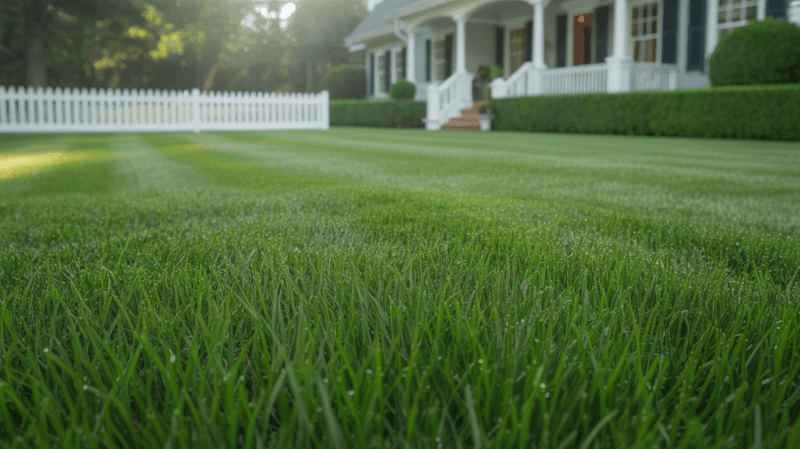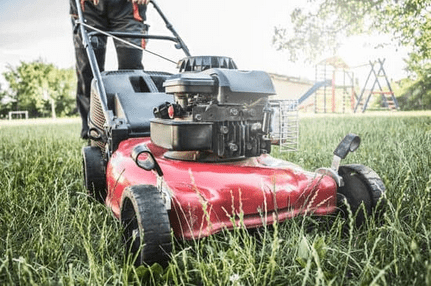Learn How to Deal with Drought Conditions:
I'm excited to share the benefits of a drought-resistant lawn and garden. They help conserve water and reduce maintenance costs. With water bills rising, it's smart to choose water-efficient landscaping. Xeriscaping utilizes drought-resistant plants and eco-friendly materials to create a low-maintenance yard.
Drought-resistant plants use much less water than traditional ones. This is particularly important in areas with regular rainfall, where maintaining thirsty lawns is less practical. By employing drought-resistant strategies, you can maintain a beautiful and eco-friendly outdoor space.

Introduction to Drought-Resistant Landscaping
There are over 60 plants for drought-resistant gardens, making it easy to create a water-wise space. You can choose from succulents to hardy perennials. Plus, with a 25% discount on selected plants using the code FEBFAVES, you can start today.
Key Takeaways
-
Due to rising water bills and higher demand, traditional landscapes are becoming more expensive to maintain.
-
Drought-resistant plants can substantially reduce water usage compared to traditional plants.
-
Xeriscaping design is an excellent way to create a low-maintenance yard with reduced water usage.
-
Eco-friendly hardscaping materials like permeable paving can reduce runoff and improve water absorption.
-
Native plants are adapted to local conditions and require minimal supplemental water, making them ideal for drought-resistant landscaping.
-
Drip irrigation and soaker hoses are more efficient than overhead watering, leading to significant water savings.
-
Organic mulch can reduce evaporation and help soil retain moisture, which is critical in arid climates.
Understanding Drought-Resistant Lawn & Garden Basics
Exploring drought-resistant lawn and garden care is exciting. I've learned about plants that do well in dry weather. Over 40 million acres of turf grass are grown in the U.S. each year. This shows why people in dry areas are choosing plants that use less water.
Using drought-tolerant landscaping and drought-resistant plants help save water. This makes your outdoor space beautiful without using a lot of water.
Water-saving garden design reduces water usage, resulting in lower bills. It also helps plants stay healthy and fight off pests better. To start, take a look at your garden and identify areas where you can make improvements. Xeriscaping tips can help you make your garden beautiful and green.
Some great drought-resistant plants include Lantana, Sedum (also known as Stonecrop), and Lavender. They do well in dry weather. By picking the right plants and using drought-tolerant landscaping, you can have a lovely garden that's good for the planet. Here are some perks of water-saving garden design:
-
Less water use
-
Lower water bills
-
More pest resistance
-
Fewer plant diseases
By using these tips and picking drought resistant plants, you can make a beautiful garden that's green even in dry weather. Always check your garden and see where you can make it better. And don't be afraid to ask for help from experts in xeriscaping tips and water-saving garden design.
Planning Your Water-Efficient Landscape
I focus on low-water landscaping and drought-friendly lawn care when planning my water-efficient landscape. This method saves water and cuts down on upkeep. I choose drought-tolerant plants and utilize efficient irrigation systems to create a beautiful and lush outdoor space.
Creating a water-conserving gardening plan involves considering the climate, soil, and plants. For example, drought-resilient outdoor spaces use xeriscaping. This method utilizes plants that require minimal water, thereby reducing the need for additional watering.
Some important things to think about when planning a water-efficient landscape include:
-
Using methods like drip irrigation or smart sprinkler systems for watering
-
Choosing a mix of plants, like perennials, trees, shrubs, and lawns
-
Applying mulch to keep the soil moist and lower evaporation
-
Grouping plants by their water needs improves watering
By using these strategies, I can make a landscape that saves water and looks great. It makes my outdoor area more beautiful and eco-friendly.
Selecting the Right Plants for Dry Conditions
Creating a beautiful outdoor space is all about choosing the right plants. I focus on drought-tolerant plants to save water. Xeriscaping design helps me make a stunning, low-maintenance landscape.
I've found many plants that do well in dry weather. Native plants are beneficial because they are well-suited to the local climate and soil. They add beauty and are drought-tolerant. I also use organic mulch to keep the soil moist and reduce watering.
Here are some perks of using drought-tolerant plants:
-
Less water needed
-
Easy to care for
-
Strong against pests and diseases
-
Healthier soil
By employing sustainable gardening practices, my garden is both visually appealing and environmentally friendly. With the right plants and xeriscaping design, it is perfect for dry weather. It looks great and needs little care.
Smart Irrigation Strategies
Exploring water-efficient lawn care reveals the importance of smart irrigation. It helps cut down water use while keeping outdoor spaces beautiful and green. Eco-friendly garden design and low-water gardening are key. They help homeowners have lush lawns and gardens that need little water.
Efficient irrigation systems, like drip irrigation, are essential. They send water straight to the roots, cutting down on waste and runoff.
Smart irrigation brings many benefits. It saves water, lowers bills, and keeps lawns and gardens healthy. Sustainable landscaping, like using rainwater and controlling water pressure, also helps. For instance, soil moisture sensors adjust watering based on soil moisture, avoiding too much water.
Here are some smart irrigation strategies to think about:
-
Drip irrigation: delivers water directly to plant roots, reducing water waste and runoff
-
Rainwater harvesting: collects and stores rainwater for irrigation, reducing the need for potable water
-
Pressure regulation: reduces water waste caused by high-pressure operation, which can lead to fogging or misting
-
Smart controllers: optimize the timing, quantity, and frequency of water applied to landscapes, using seasonal adjustments and weather data
These smart irrigation methods allow homeowners to enjoy a green, sustainable outdoor space. They'll use less water and help the environment. Eco-friendly garden design and low-water gardening make it easy to have a beautiful, water-efficient lawn and garden.
Soil Preparation and Maintenance Techniques
Creating a drought-tolerant landscape starts with the soil. Adding organic matter, such as compost, enhances soil quality. It helps keep moisture in and supports healthy roots. This is key for a low-maintenance yard that needs less watering.
Effective xeriscaping tips include mulching around plants. This can reduce evaporation by 30% and prevent weeds. Also, arranging plants by water needs makes irrigation more efficient. Here are the main benefits:
-
Improved soil quality and moisture retention
-
Reduced evaporation and weed growth
-
Increased efficiency in irrigation practices
By using these methods, homeowners can make a lovely, water-saving outdoor space.
Creating Zones for Maximum Water Efficiency
I've been looking into ways to make my outdoor space more water-friendly. I've learned that dividing my yard into zones is key. This way, I can water each area based on its needs, saving water and helping the environment.
Hydrozoning allows me to group plants by the amount of water they require. This ensures that each zone receives the correct amount of moisture. It's a smart way to use water wisely.
Using drought-tolerant plants and efficient irrigation systems can be highly beneficial. For instance, I can choose native plants that need little water. Alternatively, I can incorporate xeriscaping elements to reduce watering needs.
Here are some tips for creating zones for maximum water efficiency:
-
Group plants by their water needs to minimize waste and ensure each zone receives the right amount of moisture
-
Use drought-tolerant plants and efficient irrigation systems to reduce water consumption
-
Incorporate water-conserving gardening techniques, such as mulching and rainwater harvesting, to minimize waste
I can make a beautiful, sustainable outdoor space by following these tips. It will use less water and support plants and wildlife. Water-efficient landscaping and drought-friendly lawn care help me enjoy a lush yard without harming the environment.
Conclusion: Embracing Sustainable Garden Practices
Thinking about sustainable gardening, I see it's more than saving water. It's about making our outdoor spaces beautiful and alive. Using low-water landscaping and dry climate gardening, we can have a stunning yard and help the planet.
Water-wise gardening is key to sustainable gardening. It means utilizing eco-friendly designs to conserve water, including the use of smart irrigation systems and native plants that are well-suited to our local climate.
By going green in our gardens, we use less water, save money, and help local wildlife. Whether you're new to gardening or have been doing it for years, incorporating sustainable practices can significantly benefit the environment and our community.
Let's all work together to make our future greener, one garden at a time. Choosing sustainable gardening helps our planet and makes our outdoor spaces wonderful.
FAQ
Q: What is the difference between drought-tolerant and drought-resistant plants?
A: Drought-tolerant plants can survive with little water. Drought-resistant plants can thrive in dry conditions with no water. Knowing this helps make a water-efficient landscape for dry spells.
Q: How can I assess my current landscape to identify areas for improvement?
A: Start by checking your soil type, climate, and plants. See where you use the most water. This helps plan for drought-resistant strategies and lower water use.
Q: What are some benefits of water-wise landscaping?
A: Water-wise landscaping cuts down on water use and bills. It makes your outdoor space beautiful and low-maintenance. It also reduces water waste and environmental impact.
Q: How can I choose the right plants for my dry climate?
A: Choose drought-tolerant and native plants for a water-efficient space. Succulents, cacti, and xeriscaping plants are good for dry areas.
Q: What is xeriscaping, and how can it help with water conservation?
A: Xeriscaping uses drought-tolerant plants and efficient irrigation to save water. It makes a beautiful, low-water outdoor space.
Q: How can I implement smart irrigation strategies in my lawn and garden?
A: Use a drip irrigation system to water plants directly. This reduces evaporation and runoff. Additionally, set watering schedules and collect rainwater to conserve more water.
Q: Why is soil preparation and maintenance important for drought-resistant lawn and garden care?
A: Good soil preparation and maintenance are key for a healthy, water-efficient space. Add organic matter and mulch to enhance the soil's water-holding capacity and reduce erosion.
Q: How can I create zones for maximum water efficiency in my lawn and garden?
A: Group plants by water needs to deliver the right amount of water. Consider microclimates and soil types for a more efficient landscape.
Q: What are some eco-friendly garden design tips for reducing water consumption?
A: For a sustainable space, consider using low-water landscaping techniques such as xeriscaping and dry-climate gardening. Additionally, consider rainwater harvesting and greywater reuse.
Q: How can I maintain a drought-resistant lawn and garden during extreme weather conditions?
A: Use drought-friendly lawn care practices, such as water-conserving gardening. Choose drought-tolerant plants and xeriscaping for a resilient outdoor space.
DISCLAIMER
This document is provided for general information purposes only and should not be relied upon as providing legal advice, technical, or specific operational guidance to the reader, whether as to the practices described in the document or the applicable legal requirements and regulations. Lawnfly.com expressly disclaims any responsibility for liability arising from or related to the use or misuse of any information in this document.







